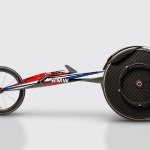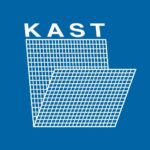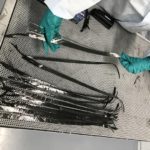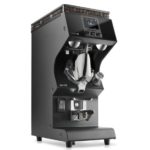Following up on an announcement made last year, BMW has introduced its all-new racing wheelchair, which will find use in the 2016 Paralympic Games in September. BMW has worked closely with the American team to create a chair that capitalizes on aerodynamic design and carbon fiber construction. Those that don’t follow the Paralympic Games or similar events might not recognize BMW of North America’s design as a wheelchair, but the long chassis and three-wheeled layout is standard design fare for racing. What makes this a BMW design besides BMW livery is its reworked chassis, carbon fiber components and modernized aerodynamics – a few areas BMW designers and engineers have some experience in. BMW also says the wheelchair is designed around personalized athlete fit. BMW of North America has been working on the wheelchair with US Paralympics Track and Field Team athletes and coaches, and while it unveiled it in recognition of the 100-day countdown to the Rio Olympic Games, its work is not complete. It plans to continue refining the design alongside athletes until making final delivery of the racing fleet this summer (Northern Hemisphere). The Rio Paralympic Games follow the Olympic Games and commence on September 7. “Working on this project has been a truly rewarding experience for my team, and we’re proud of what we’ve been able to accomplish in the last year and a half with these athletes and their coaches,” said Brad Cracchiola, BMW Group DesignWorks’ associate director. “From fittings and immersion sessions, to data analysis and real-time testing, we had the unique opportunity to build a fully customized racing device. We’re eager to complete the final product and look forward to watching Team USA compete.” The new racing wheelchair is the fourth project that BMW has worked on in collaboration with Team USA since signing on as a sponsor in 2010. Others have included a medal-winning bobsled and performance-tracking endeavors.














